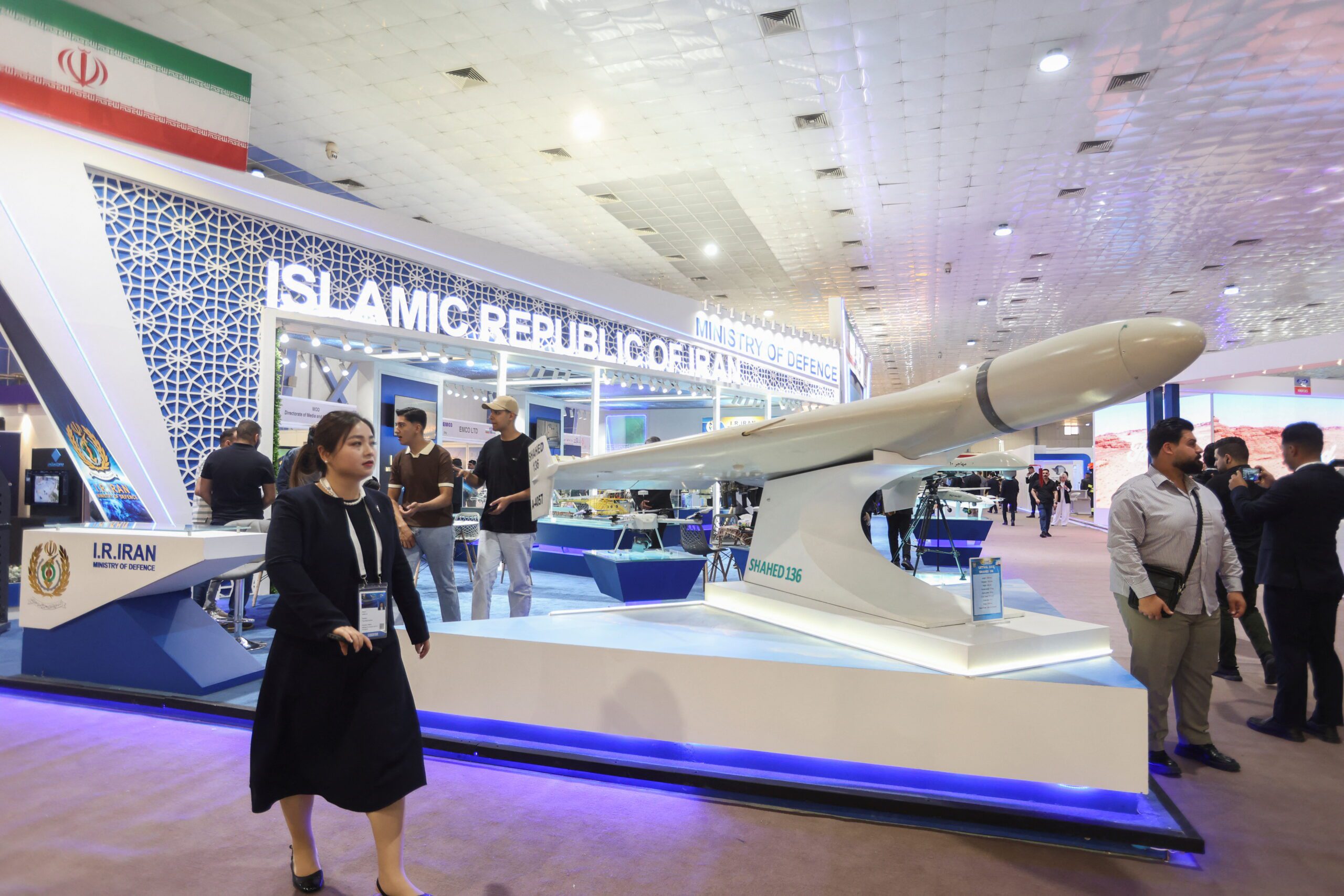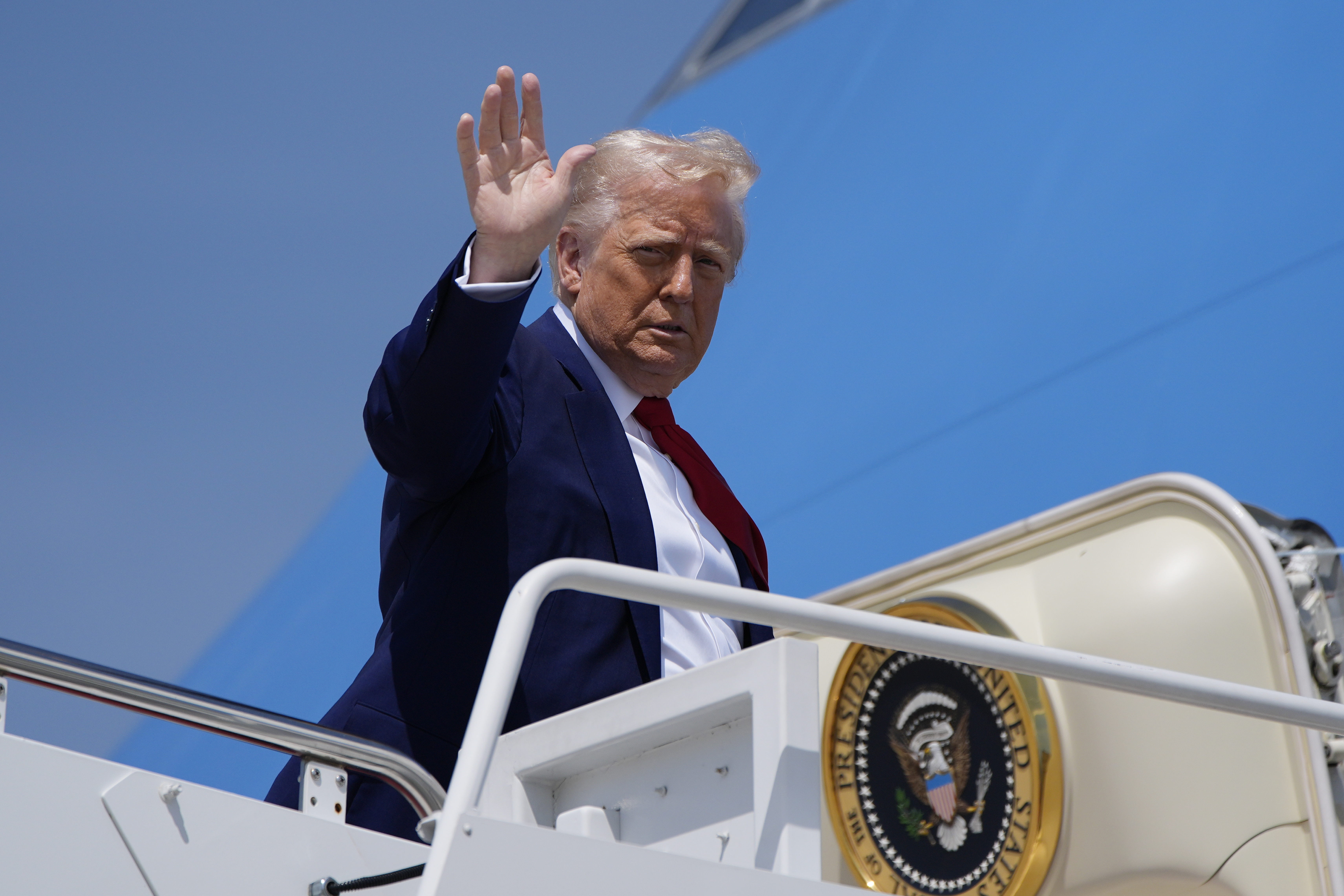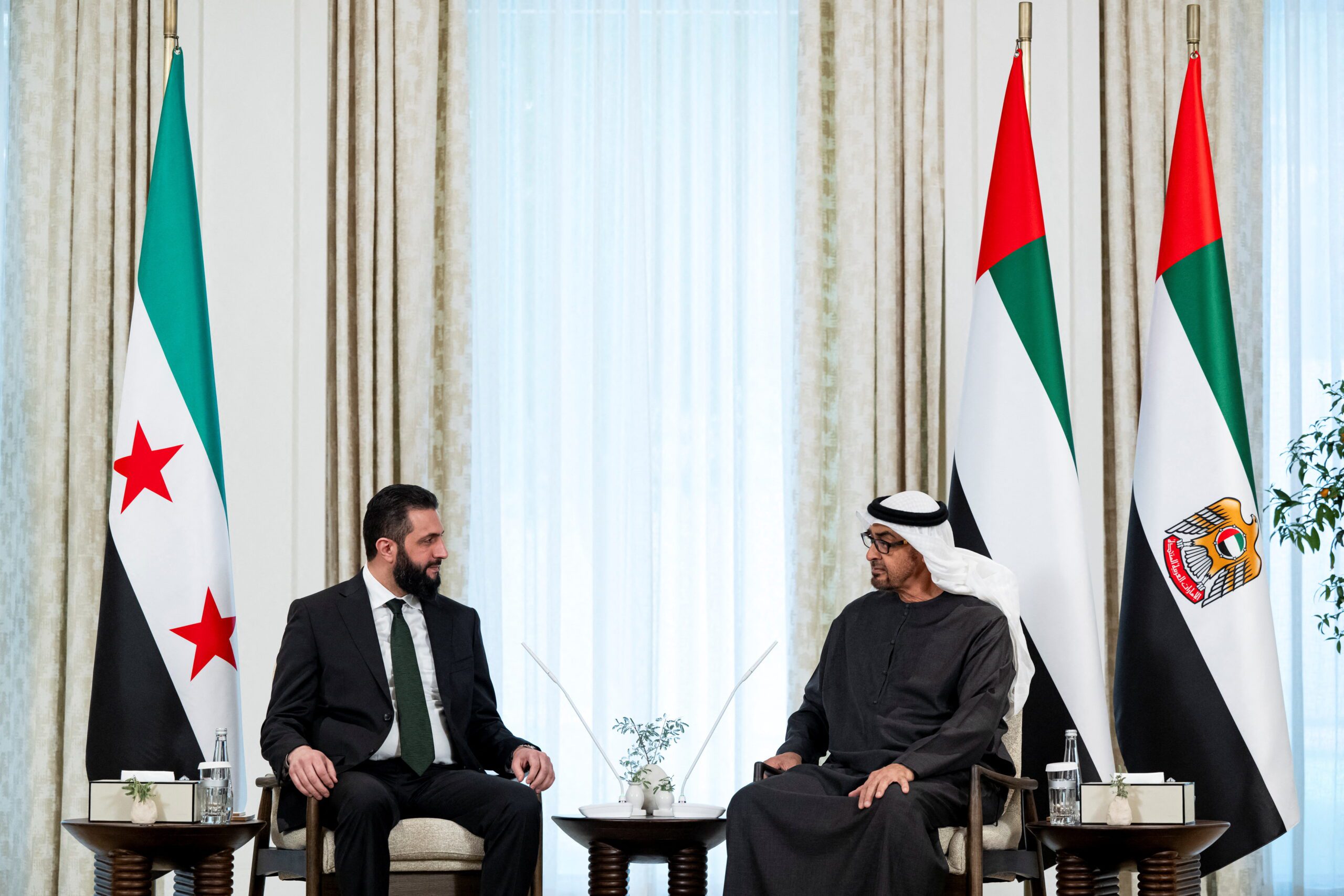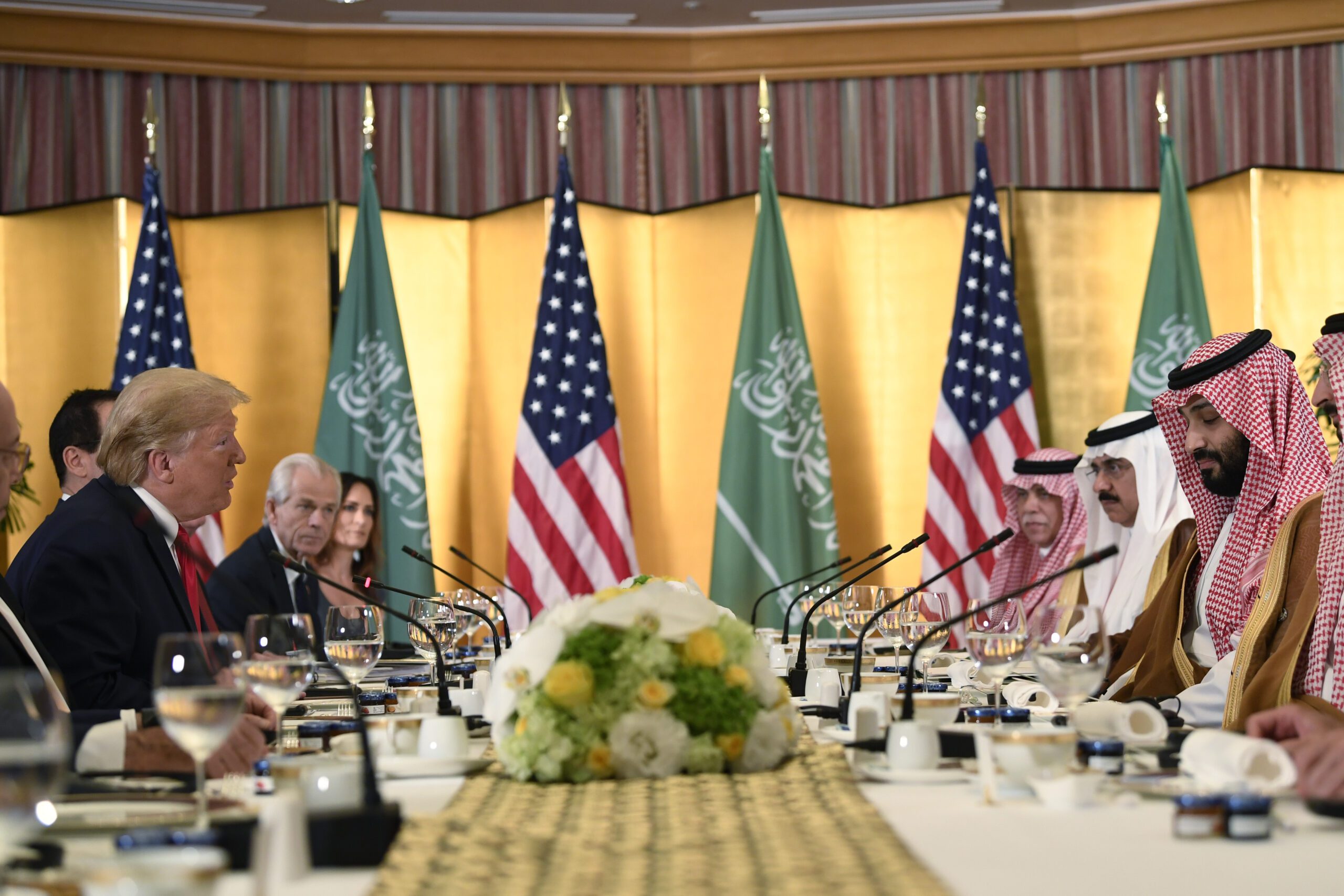AI and the U.S.-Gulf Tech Axis
The convergence of Gulf capital and energy with U.S. technology leadership signals the emergence of a U.S.-Gulf AI axis with global economic and geopolitical implications.

Artificial intelligence is emerging as a strategic industry as pivotal in today’s geopolitical economy as oil was in the 20th century. The United States and Gulf states are entering a new phase of strategic alignment shaped by AI. With Washington’s July 23 announcement of “America’s AI Action Plan,” the United States is committing to accelerating AI infrastructure and partnerships abroad – an effort that dovetails with Gulf states’ own ambitious technology pivots. The convergence of Gulf capital and energy with U.S. technology leadership signals the emergence of a U.S.-Gulf AI axis with global economic and geopolitical implications.
The Gulf’s AI Ambitions: Capital, Commitment, and Competition
In the evolving landscape of global tech, the Gulf has quickly emerged as a dynamic player, pivoting from its resource-driven political economy toward a digitally empowered future. This transformation is built on deliberate, top-down commitments to advanced tech – especially AI – as a core driver of growth and stability. It is championed by younger Gulf leaders who are not only aware of disruptive technologies but determined to integrate them into national strategies. There is a clear hierarchy among Gulf states in the AI and tech sphere, with the United Arab Emirates in a commanding lead. Multiple recent studies rank the UAE as the Arab world’s top performer, placing it 32nd out of 109 countries globally for AI maturity. Saudi Arabia follows, with Qatar typically ranking third in the Gulf but some way behind in global scale and AI ecosystems.
This regional transformation is underpinned by several advantages:
- Capital: Decades of surplus oil and gas revenue created some of the world’s largest and most active sovereign wealth funds. These funds are aggressively targeting global tech assets, startups, and infrastructure, seeking a commanding stake in the technological future.
- Energy: The Gulf’s abundant, low-cost energy supplies offer a crucial advantage in hosting and scaling massive AI “compute hubs,” since data centers consume enormous amounts of power.
- Visionary Leadership: Leaders in Saudi Arabia, the UAE, and Qatar – many educated in the West – have embraced national strategies, such as Saudi Vision 2030 and Abu Dhabi Vision 2030, integrating AI infrastructure, talent development, and regulatory reform to foster indigenous tech ecosystems. Qatar is a player in AI and technology, though its scope and influence differ from that of the UAE and Saudi Arabia. Qatar has invested over $2.4 billion in AI capabilities, aligning its efforts with Qatar National Vision 2030 and the Digital Agenda 2030 to accelerate digital transformation.
Despite these strengths, the Gulf’s journey has had to adjust to the dynamics of great power competition between the United States and China. For much of the past decade, U.S. policy in the Gulf has been characterized more by reactive security postures and efforts to counter Chinese penetration than by offering clear, constructive alternatives. The United States, watching Chinese tech behemoths, including Huawei and Alibaba, gain traction – especially in 5G deployments, smart city projects, and cloud infrastructure – responded by urging Gulf allies to shun Chinese systems. However, this approach was largely negative: offering warnings, restrictions, and pressure rather than robust, proactive, and affordable U.S. alternatives.
The Chinese, conversely, offered comprehensive, affordable, “one-stop” digital transformation packages with quick execution and minimal political strings. Gulf governments found this partnership appealing, not least because it came bundled with respect for sovereignty, cloud localization, and swift delivery. The result was significant early progress for China in capturing the Gulf’s digital buildout.
From Tech Containment to Strategic AI Alignment
For much of the past decade, Washington’s approach to Gulf tech policy was largely reactive. The focus was on blocking Chinese digital infrastructure rather than offering compelling U.S. alternatives. This defensive stance risked ceding ground to Beijing, whose tech giants provided cost-effective, turnkey capabilities with few political strings attached.
This dynamic appears to have pushed U.S. officials to rethink their approach. What began as a defensive effort to block Chinese digital infrastructure has evolved into a proactive strategy of collaboration and co-development with Gulf partners, focused especially on AI.
Two structural realities underpin this shift: U.S. dominance in semiconductors, foundational AI models, and cloud platforms and the Gulf’s unmatched combination of abundant, low-cost energy and capital – essential ingredients for scaling compute-intensive AI infrastructure.
This pivot was formalized in July with the release of “Winning the AI Race: America’s AI Action Plan,” which commits to streamlining regulations, accelerating data center construction, and advancing U.S. leadership in global AI diplomacy. In effect, Washington signaled it was no longer merely defending market share but actively building a U.S.-led AI ecosystem with the Gulf positioned as a core partner.
Complementary Strengths and Emerging Opportunities
The AI Action Plan aligns naturally with the Gulf’s strengths in energy and capital. U.S. tech giants (i.e., Amazon, Meta, Microsoft, OpenAI, and xAI) are ramping up data center construction at unprecedented rates, pushing electrical grids to new limits. BloombergNEF estimated AI data centers accounted for roughly 3.5% of U.S. electricity consumption in 2024, and this is expected to more than double by 2035. Deloitte provided an even more striking estimate: Power demand for AI data centers could grow more than thirtyfold by 2035.
This surge in demand creates an opening for the Gulf. With abundant, reliable, and economically priced energy, Gulf states are uniquely positioned to host or support large-scale AI compute hubs. By integrating Gulf energy resources – whether through hosting data hubs regionally or providing investment into U.S. energy infrastructure – Washington can ease its domestic “energy bottleneck” while accelerating infrastructure scaling.
Capital flows reinforce this synergy. Gulf sovereign wealth funds, now among the world’s most aggressive tech investors, are expanding their portfolios beyond passive equity stakes to include direct investments in U.S. AI infrastructure, clean-energy projects, and semiconductor manufacturing. Gulf leaders have also made clear that their ambitions go beyond simply purchasing U.S. tech: They aim to become co-creators of the global AI ecosystem, building research hubs, cultivating domestic champions, and eventually exporting their own AI products and services.
A New U.S.-Gulf AI Compact Takes Shape
The partnership moved from concept to reality in September 2024 when President Mohammed bin Zayed al-Nahyan made the first-ever White House visit by a UAE head of state. Unlike past summits dominated by energy and security, this meeting placed AI, investment, and space exploration at the top of the agenda – a clear signal that Washington was prepared to shift, albeit cautiously, from a posture of containment and restriction to one of strategic technological partnership.
This realignment was catalyzed by increasing recognition of two closely intertwined realities. On the one hand, the United States dominates the global AI tech stack, particularly in semiconductors, foundational models, and cloud infrastructure. On the other hand, the scalability of these technologies is increasingly constrained not just by dollars but by access to reliable, cheap energy – precisely where the Gulf excels.
The shift has accelerated under the second administration of President Donald J. Trump, which emphasized integrating Gulf countries into a U.S.-led AI future built on superior U.S. hardware, software, and technical expertise. Saudi Arabia, once known primarily as a “swing producer” of oil, along with the UAE and Qatar, is positioning the Gulf to become a “swing region” for AI – a global hub capable of mediating partnerships among the West, Asia, and Africa.
Trump’s high-profile May visit to the region, accompanied by leading U.S. tech CEOs and investors, brought this vision into focus. One of the most significant outcomes was a series of landmark deals involving the direct exportation of advanced AI processors and infrastructure. Saudi Arabia’s and Abu Dhabi’s sovereign wealth funds and local digital champions (e.g., G42, STC, and others) are expected to commit tens of billions of dollars to acquire the latest U.S. chips, cloud platforms, and AI cluster construction, with Nvidia alone to supply over 1 million top-tier chips to the region’s expanding data centers.
Just as significant was the reciprocal flow of capital, as Gulf funds pledged substantial investments into U.S. AI infrastructure and energy systems – including the UAE’s sweeping 10-year, $1.4 trillion U.S. investment framework, featuring a $25 billion commitment to data centers and clean energy.
Joint ventures added another layer, with U.S. tech firms, such as Google, Oracle, and Cisco, agreeing to deepen local production, skills transfer, and tech localization. Abu Dhabi’s planned 5-gigawatt “AI Campus” – designed to become one of the world’s largest AI compute hubs outside the United States – underscores the seriousness of these ambitions and the premium placed on embedding capabilities within the region.
The AI Action Plan has provided the latest institutional anchor, slashing regulatory barriers, fast-tracking data center development, and liberalizing the exportation of advanced AI chips and software to trusted Gulf partners. Together, these developments signal a shift from a transactional oil-and-arms relationship to a structural, tech-driven compact. This partnership positions the Gulf as a critical node in U.S.-led AI supply chains while giving Washington a stronger foothold in the global competition with China.
This new arrangement carries powerful implications for ongoing great power competition. By embedding proprietary U.S.-developed chips and software across Gulf AI infrastructure and, prospectively, forming joint ventures with Gulf partners in third markets, Washington strengthens its influence in the Global South, especially Asia and Africa, outmaneuvering Beijing’s Digital Silk Road, an offshoot of the Belt and Road Initiative. The Gulf’s multidirectional economic statecraft, once a source of complexity, becomes a force multiplier for U.S. ambitions – so long as policy alignment and trust endure.
Obstacles, Risks, and the Uncharted Frontier
Yet significant challenges remain, both for Gulf partners and U.S. policymakers. Building a U.S.-Gulf AI axis exposes vulnerabilities and trade-offs: securing intellectual property, ensuring supply chain resilience, and managing dual-use technologies that could have military applications. Talent shortages pose another barrier – both regions face stiff competition for skilled AI engineers and data scientists. At the same time, lingering Chinese-built infrastructure in Gulf smart cities and 5G networks raises cybersecurity concerns. Navigating these risks while scaling at speed will require not just investment but new governance frameworks and joint security protocols.
A central debate is likely to continue in Washington: Should U.S. policy lean toward diffusion of advanced technology to trusted Gulf partners or return to restrictive export controls to preserve U.S. intellectual property advantages and constrain potential adversaries? The diffusion camp argues that sharing tech and know-how with the Gulf locks partners into the U.S.-led system, consolidates U.S. standards, and builds resilient global supply chains. The denial camp worries about risks, such as loss of sensitive tech to unintended actors, the potential for Gulf-based champions to undercut U.S. strategic interests, and challenges in countering diversion or espionage.
The acceleration demanded by the AI Action Plan intensifies these tensions. Efforts to speed data center and chip deployment in collaboration with the Gulf risk running ahead of regulatory systems designed to safeguard intellectual property, oversee exports, and manage alliances with nonaligned digital partners. The push for scale sharpens anxieties about tech leakage and infrastructure vulnerability, making reconciling diffusion and denial strategies urgent.
For their part, Gulf states manage a complex tightrope. Their dual ties to the United States and China create awkward dilemmas. U.S. agencies worry that Chinese-built 5G infrastructure, cloud platforms, and smart city technologies could serve espionage or coercion goals. Gulf officials stress contractual and cybersecurity firewalls separating digital spheres. This dual approach avoids reliance on any one partner but perpetuates base vulnerabilities.
Physical risks also loom. The growth of massive AI data centers in a geopolitically volatile region creates new strategic infrastructure to protect. These clusters, which are critical for regional ambitions and the U.S.-aligned global AI supply chain, are potential targets for cyberattacks, terrorism, or sabotage. Ensuring security and resilience of these facilities requires new doctrines and U.S.-Gulf cooperation modalities, with broad regional security implications.
Above all, the future of AI tech remains unpredictable. Advanced AI applications – from generative models to autonomous operations – carry unknown risks and destabilizing potential. Concerns about theft, black-box failures, and misuse elevate the stakes, demanding nimble policy, adaptation, and readiness to face uncertainty for opportunity’s sake.
The AI Inflection Point
In less than a decade, the Gulf has reinvented itself as a serious contender in the global AI and tech race, not simply as a passive market but as an active co-architect of the AI-driven future. This transformation rests on visionary leadership, financial ingenuity, energy abundance, and an openness to technological change.
For the United States, the Gulf offers not only capital and energy but also the chance to lock in trusted partners amid rising global fragmentation and technological bifurcation. The new approach – epitomized by the July AI Action Plan and strengthened through practical, reciprocal investments on the horizon – has turned the page from a defensive relationship to a dynamic, mutually reinforcing partnership.
However, major challenges remain. The U.S.-Gulf compact shows what vision, resources, and strategic necessity can achieve. Still, the Gulf’s rise as a tech hub is not just regional; it is an inflection point in the global order, heralding a future where tech, security, and international cooperation intertwine.
The views represented herein are the author's or speaker's own and do not necessarily reflect the views of AGSI, its staff, or its board of directors.








